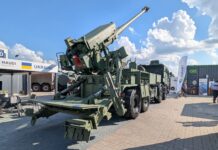As the sun begins to set on 2024, it is time to look back at the state of key conflicts, how they have developed over the past year, and where things appear to be headed.
For the most part, Ukraine has continued to steadily lose ground to Russia along the key frontlines, and while it made some gains with the Kursk incursion, a large percentage of this captured land has since been recaptured by Russia. As of mid-October 2024, Ukraine has lost a large chunk of Toretsk, while Selydove appears to be in the process of being surrounded, as are Hirnyk, Kurakhivka, and Zoriane. Further South, Russian forces are gradually pushing northward, having captured Kostiantynivka and Vuhledar. Elsewhere, Pokrovsk appears to be relatively secure for the time being, but this state is not expected to last more than a couple of months, with the town already having been largely evacuated by late September 2024. A similar story seems the case for Kupiansk, with Kharkiv Regional Governor Oleh Syniehubov, ordering the town’s evacuation on 15 October, following Russian advances to within less than 2 km of the Oskil River section near Kruhlyakivka. Despite Ukrainian attacks on several key Russian munitions depots in mid-September 2024, the overall pace of Russian advances does not appear to have slowed.
Against this background, on 16 October 2024, Ukrainian President Volodymyr Zelenskyy presented a ‘Victory Plan’ to Ukrainian Parliament, claiming “we may manage to end the war no later than next year”. The plan includes various measures, such as Ukraine being invited to join NATO, deployment of an unspecified non-nuclear strategic deterrent, setting up a joint military-industrial complex with the West, and a lifting of restrictions regarding NATO weapon use against targets within Russia. On the latter point – while widely reported to be a problem of permission, this is not the case – many of these long-range weapons would in practice require NATO countries becoming more directly involved, by providing support in the form of targeting information, as well as planning and intelligence analysis. This is a step many have refused to take.
Among some analysts, the political reading of Zelenskyy’s Victory Plan has been fairly cynical – not least because the plan almost entirely relies on actions by Ukraine’s allies. Some have even gone as far as to say it is a diplomatic means of laying the groundwork for attribution of blame on insufficient support from the West in the case of Ukraine’s defeat. Overall, the prospects of victory for Ukraine seem to be receding into the distance, while the looming prospect of a Trump presidency darkens Ukraine’s horizon further.
In the Middle East, things only seem to have escalated since 2023, with Israel expanding its strikes beyond Gaza, and setting its sights against Hezbollah in Lebanon, following the latter’s sporadic strikes on northern Israel. This started with a series of attacks starting on 18 September 2024, initially using compromised pagers, and on subsequent days followed by walkie-talkies, and various other electronic devices, all of which had been intercepted by Israel and high explosive materials implanted within by the Israeli secret services, allowing remote detonation. This was soon followed by a massed air strike campaign against numerous targets in Lebanon on 23 September 2024, continuing in the subsequent week, and aimed at wiping out Hezbollah’s leadership. This saw success, with various key leadership figures confirmed to have died, most notably Hezbollah’s leader Hassan Nasrallah on 27 September. Following Nasrallah’s death, Naim Qassem has assumed leadership of the armed group. Bombings on Lebanon have continued, as Hezbollah has continued to prosecute a campaign of rocket and drone attacks on Israel.
Shortly after Nasrallah’s death, Iran launching a major retaliatory strike against Israel on 1 October, using around 180-200 munitions, most of which were understood to have comprised various Iranian-built medium-range ballistic missiles (MRBMs), but also reported to have included one-way attack (OWA) drones. While some Israeli outlets claimed a high percentage of threat munitions were intercepted, this did not appear to be borne out by available photo and video evidence, which showed a large number of missiles leaking through Israel’s defences, along with detonations and craters from missile impacts. Despite many successful impacts, the accuracy of the missiles seemed to have been relatively low, with many appearing to have struck nearby their presumed targets. The attack appears to have been aimed primarily at many Israeli intelligence and military facilities, including Mossad’s HQ in northern Tel Aviv, Nevatim airbase (home to Israel-s F-35I Adir fighter aircraft) in southern Israel, and Tel Nof airbase (reported to house at least some of Israel’s air-launched nuclear arsenal) in central Israel. The end result appears to have been variable damage to buildings and infrastructure, but minimal human casualties.
Given the lack of follow-up, Iran’s 1 October strike should probably be read politically as a very strong shot across the bows, and a demonstration that it has the capability to break through Israel’s defences. While a typically severe Israeli response is expected, such a course would be expected to trigger further retaliatory attacks, with many possible actors equipped to do so; including Iran itself, Hezbollah in Lebanon, Kata’ib Hezbollah in Iraq, and Ansar Allah in Yemen.
It will likely be challenging for Israel to expand its strike campaign significantly beyond current limits without significant US materiel support, and here again, much rests on the outcome of the US Presidential election. Given what is at stake for both Ukraine and the Middle East, this may well prove a 5th of November that will never be forgot.
Mark Cazalet








![Ukraine: Russian forces capture key towns [via Ugolok_Sitha Telegram Channel]](https://euro-sd.com/wp-content/uploads/2025/11/Russian-Motorbike-loaded_via-Ugolok_Sitha-Telegram-Channel-Kopie-218x150.jpg)





